Every editorial product is independently selected, though we may be compensated or receive an affiliate commission if you buy something through our links. Ratings and prices are accurate and items are in stock as of time of publication.
Modern vehicle tires are tough, standing up well to rough terrain and thousands of miles of driving. Trouble is, tires are not invincible. Every so often car tires spring leaks. Air can start leaking from anywhere on a tire, and the location of the leak determines whether or not you can fix it yourself. And if you can't fix it yourself, the location of the leak will also tell you if you need a professional repair or a new tire.
Whether or not your tire is tubed or tubeless affects things, too, because only tubeless tires can be repaired using the technique of plugging that we'll show you here. The good news is that modern vehicles always have tubeless tires, and this means that repairing with a rubber plug is often an option.
Plugging a tubeless tire is only a possibility when your puncture is in the tread area. If the air leak is where the sidewall of the tire meets the rim — this is called a "bead leak" — you'll need to visit a mechanic with a tire machine to dismount the tire from the rim and remount it with sealing liquid applied to the bead. If your sidewall has been punctured, you need a new tire, because damage there can lead to a blowout at highway speeds, even after repair.
Learn exactly how to plug a tire so next time you spring a leak between your treads, you'll be able to get up and running again in record time.
Total time completing the repair is about 15 minutes. Doing the work yourself will save you about $20 and the time spent driving to the garage and waiting.

Steve Maxwell for Family Handyman
Complete DIY projects like a pro! Sign up for our newsletter!
Do It Right, Do It Yourself!
Originally Published: August 27, 2020
Posted by Jefferson Bryant Know How
Flat tires tend to happen at the worst time in the worst places.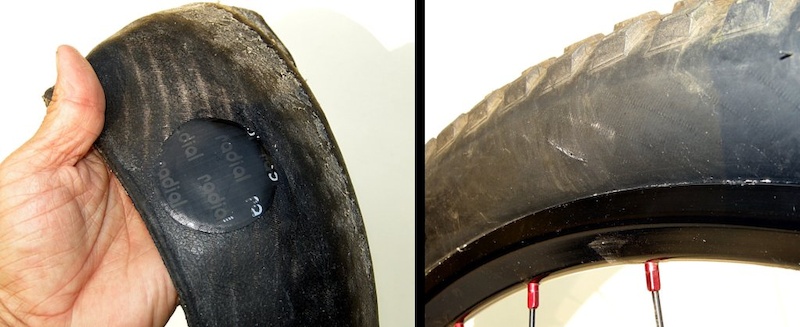 If you are on the road or outside of normal business hours when your vehicle has a flat and the spare is missing or no good, you might feel stranded, but there is an option—a tire plug kit. This is something that anybody can do, you just need the right parts.
If you are on the road or outside of normal business hours when your vehicle has a flat and the spare is missing or no good, you might feel stranded, but there is an option—a tire plug kit. This is something that anybody can do, you just need the right parts.
Liquid tire repair might get you down the road, but it could make your tire repair difficult and possibly damage the TPMS (Tire Pressure Monitor System) unit inside the rim itself depending on the formula. The best solution for an emergency tire repair is a tire plug. Made from cork and a gooey adhesive that keeps it place and seals the tire, a tire plug repair is an excellent way to get your car back on the road until you can get to a tire shop for a proper internal patch.
Installing a plug in your tire works for pierced tread area only. You cannot fix sidewall damage, compression breaks (from potholes, gravel roads or curbing) or any other type of catastrophic tire damage. The most common road hazards you will find are punctures from nails and screws.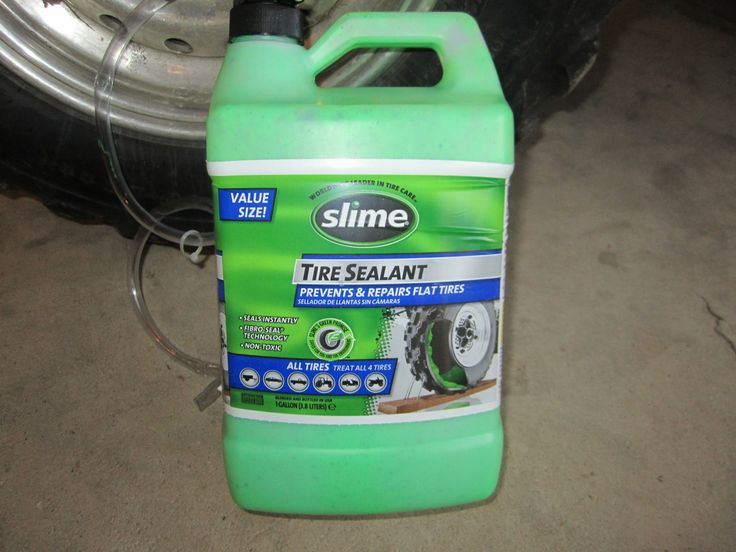 Fixing these issues are perfect for the good old fashioned tire plug. If you are wondering how long does it take to plug a tire, then the answer is just a few minutes. Most of the time is spent preparing to perform the plug itself. Here’s how to plug a tire with a plug kit.
Fixing these issues are perfect for the good old fashioned tire plug. If you are wondering how long does it take to plug a tire, then the answer is just a few minutes. Most of the time is spent preparing to perform the plug itself. Here’s how to plug a tire with a plug kit.
You will need the following to make a tire plug repair:
There are all kinds of tire plugging kits, but you want the most complete tire repair kit which comes with the plugs, the installation tool, and the reamer tool. Some flat tire repair kits just come with the plugs and installer, but the reamer tool is a necessary component to a good repair. Some tire plugging kits also come with liquid cement. You can use it or not, but the cement helps make a more permanent repair.
Some tire plugging kits also come with liquid cement. You can use it or not, but the cement helps make a more permanent repair.
Locate the puncture. If you don’t see or hear the puncture, spray some soapy water on the tire and look for bubbles.
This is a small staple that was dropping tire pressure by 20 psi in about 12 hours. It needs to go.Remove the offending item. This is usually easy, but sometimes the nail or screw is worn down, making it hard to get a bite on it. This is where the side-cutters come in really handy. You will want to position the tire where you get the most leverage.
Side cutters work best for removing these items, as they can grip small round objects better than regular pliers.Insert the reamer. This will take some effort, as you have to push it through the steel belts. Use a twisting motion and push it into the tire. Once the reamer is through, saw it in and out of the tire a few times to really make a nice hole for the plug. Yes, it is counter-intuitive, but it is necessary.
Once the reamer is through, saw it in and out of the tire a few times to really make a nice hole for the plug. Yes, it is counter-intuitive, but it is necessary.
Push the reamer all the way and then saw it in and out a few times to make a clean hole.
Prep the plug and installer. Pull a plug off the strip and push it through the eyelet of the installer tool. The pliers will make this easier. Push a little through, grab it with the pliers and pull the plug halfway through the eyelet.
Pull a cork strip from the tire plugging kit and grab the installer tool, which looks like a large needle with a slit in the eye.Threading the sticky cork tire repair plug is not easy, but if you can get it squished into the hole, you should be able to pull it on through. The side cutters might help.
Insert the plug into the tire. If the kit has liquid cement, apply some to the plug before inserting it into the tire. Simply push the installer into the hole in the tire until the plug is about 3/4 of the way in. Twist the installer tool 90-degrees and pull it out. The plug will stay in the tire and the tool will come out nice and easy. You may trim away the excess plug or leave it to wear away as you drive.
If the kit has liquid cement, apply some to the plug before inserting it into the tire. Simply push the installer into the hole in the tire until the plug is about 3/4 of the way in. Twist the installer tool 90-degrees and pull it out. The plug will stay in the tire and the tool will come out nice and easy. You may trim away the excess plug or leave it to wear away as you drive.
This is what you should see when the tire plug is installed.
Once the tire repair plug is in you can now twist the handle 90-degrees and pull the tool out.
Fill the tire to the proper PSI. If you have a portable air compressor, this will make things easy. However, if you do not, you need to get air very soon.
All done. You can trim the tire plug or leave. You will need air, so don’t go driving until you have the tire aired up.
Every automobile you own should have an emergency tire plug repair kit in the tool box, along with a portable air compressor. These emergency repairs are quite good, but for a long term repair, you should take the vehicle to a tire shop for a proper repair as soon as possible. They will know the best way to patch a tire for your type of damage.
Check out all the steering & suspension parts
Categories
Know How
Tags
emergency repair, flat tire, flat tire repair, patch flat tires, sealant, tire maintenance, tire plug kit, tire pressure, tire safety, tire wear, tires, wheels
A life-long gearhead, Jefferson Bryant spends more time in the shop than anywhere else. His career began in the car audio industry as a shop manager, eventually working his way into a position at Rockford Fosgate as a product designer. In 2003, he began writing tech articles for magazines, and has been working as an automotive journalist ever since. His work has been featured in Car Craft, Hot Rod, Rod & Custom, Truckin’, Mopar Muscle, and many more. Jefferson has also written 4 books and produced countless videos. Jefferson operates Red Dirt Rodz, his personal garage studio, where all of his magazine articles and tech videos are produced.
In 2003, he began writing tech articles for magazines, and has been working as an automotive journalist ever since. His work has been featured in Car Craft, Hot Rod, Rod & Custom, Truckin’, Mopar Muscle, and many more. Jefferson has also written 4 books and produced countless videos. Jefferson operates Red Dirt Rodz, his personal garage studio, where all of his magazine articles and tech videos are produced.
Contents
Wheel punctures are a familiar situation for every motorist. Every driver has experienced something like this at least once in their life.
But what about in this case? It's expensive to buy new tires. How to repair the damaged one then - put a patch on the inside or install a tourniquet?
Indeed, in many cases, a tire after a puncture can still serve for some time if it is properly repaired. And for minor repairs to a regular puncture from a nail or self-tapping screw, it is quite possible to use a tourniquet.
And for minor repairs to a regular puncture from a nail or self-tapping screw, it is quite possible to use a tourniquet.
It allows you to repair the damaged area well so that the tire does not deflate. Of course, it is possible that it will still be a little undercut, but it will not go down completely in a short trip.
Such a wheel must be monitored. However, it is necessary to measure the pressure in the tires periodically, even if they are brand new and have never been repaired. And, as soon as the tire deflates a little, just pump it up. So after the repair, it is quite possible to drive a whole season, or even more than one.
The patch is usually placed only for significant cuts. Many experienced motorists and tire fitters are skeptical about such repairs. They say that it is temporary and only helps to ride until a new tire is bought.
Of course, if the wheel has acquired such a significant defect, a patch can be applied. But don't expect it to last long.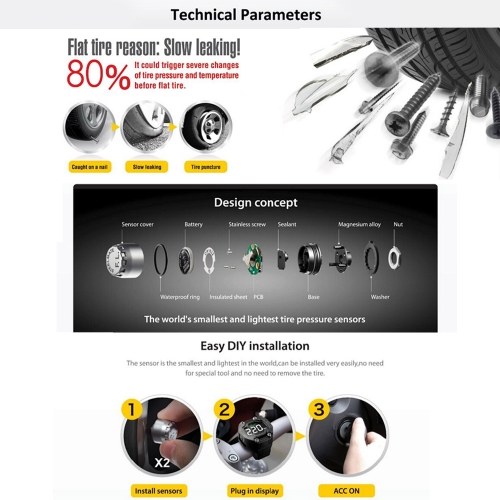 Here's how lucky.
Here's how lucky.
Therefore, after an accident, you should think about buying a new tire. It is desirable to buy it as soon as possible. But there are cases when motorists managed to successfully drive the whole season even after such a repair.
But it's better not to risk it. In the case of minor punctures, a tourniquet can be dispensed with. And, if the damage turned out to be significant, it is better to immediately buy a new tire. After all, sometimes a patch is just money thrown away.
By the way, if you have a full-size spare tire, it is quite possible to ride it until you get a new tire, but it's better to hurry, because. A tire puncture can happen anywhere. As a rule, such a misfortune overtakes at the most inopportune moment. What to do? To prevent the situation from taking you by surprise, always keep a minimum set of tools with you. This article will show you how to fix a puncture on a tubeless tire without removing it.
The first thing I want to say is always carry a pump, a jack, keys and a spare wheel with you.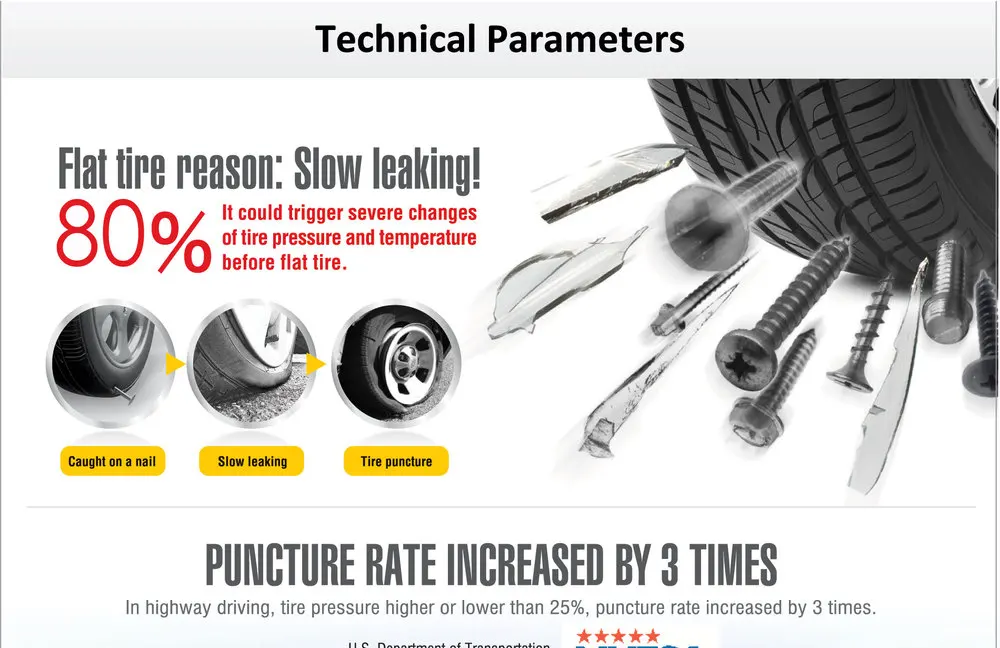 In the event of a puncture, it is not difficult to replace the wheel. But it happens that there is no way to make a replacement. What to do? To solve this problem without removing the wheel, there are as many as three ways.
In the event of a puncture, it is not difficult to replace the wheel. But it happens that there is no way to make a replacement. What to do? To solve this problem without removing the wheel, there are as many as three ways.
The first method in any case involves acquiring a special puncture sealant in advance. This is a can of sealant under high pressure.
To repair a puncture without removing the wheel, follow these steps:
It is important to know that this is only a temporary fix.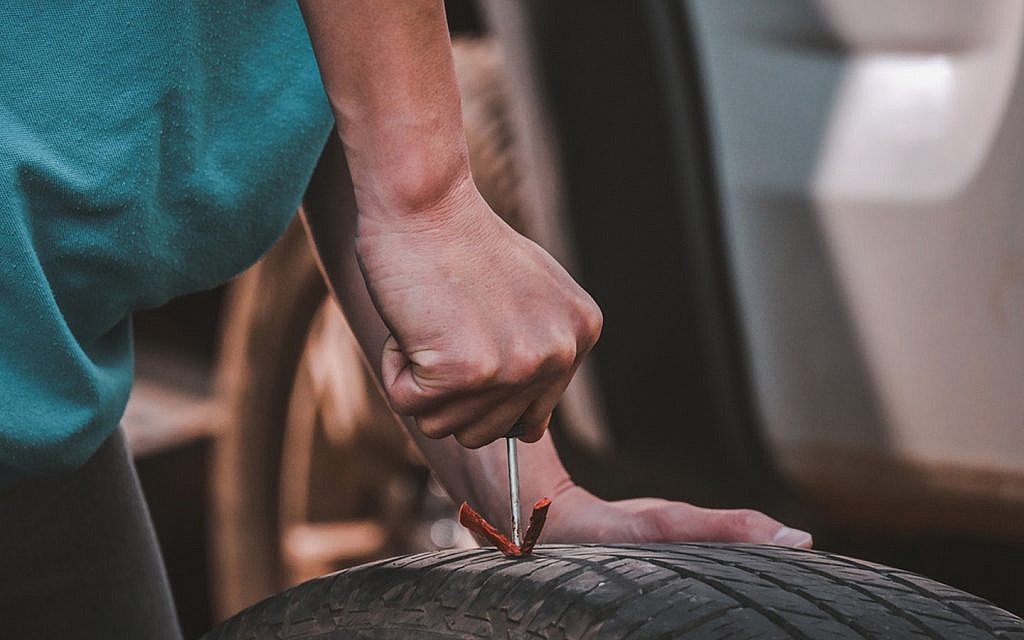 It will allow you to drive to the nearest tire shop or tire store.
It will allow you to drive to the nearest tire shop or tire store.
Another common situation is when you accidentally hit a sharp object, such as a nail. For such cases, you can use another repair kit. It includes a device like a screwdriver with a hole, a tourniquet with a sticky base, glue. A flat-blade screwdriver and pliers will also come in handy.
Let's walk through the process of repairing a puncture without removing the wheel:

But not every driver carries such repair kits with him. If you don't have anything with you, then a self-tapping screw will do. In this case, the following steps are performed:
This case is suitable when there is nothing more suitable with you, and there is no possibility or desire to call a tow truck.
Here are some simple ways to help solve the problem with a puncture. All of them are temporary measures, so after such repairs it is necessary to get to the tire fitting as soon as possible.
Every year cars become more perfect and more technologically advanced, which, perhaps, cannot be said about tires - over time, their basic properties do not fundamentally change.
Author: autojournalist
Photo: vinylmonster.ru
That is, in fact, the current tire is the same rubber on the frame as it was. And this means: modern bridgestones and nokia are protected from punctures no better than their ancient counterparts. At the same time, the methods of repairing various damages, according to experts, have become much more diverse and effective.
To eliminate a puncture, first of all, it is necessary to "heal" the hole itself - this can be done without resorting to disassembling the wheel, for example, using special harnesses. Those that are included in self-repair kits for tires usually have a textile base. This material is inexpensive and affordable, but short-lived. Therefore, servicemen recommend it only as a temporary remedy.
Therefore, servicemen recommend it only as a temporary remedy.
Rubber bands are more effective. Moreover, most modern rubber inserts consist of 2 layers. The inner (black) is a regular rubber. The outer (usually blue) layer is cold cured. What, you ask, are the differences? The vulcanization temperature of the first is about 100 degrees, the second is only 18 degrees (subject to surface treatment with chemicals). The latter property makes it possible to achieve complete sintering of repair and base materials without hot working.
To talk about a complete repair, it is not enough to restore the tightness of the tire. Hard objects, in addition to the rubber itself, also damage the cords - this can lead to a change (albeit sometimes insignificant) in the properties of the tire. To avoid them, it is necessary to restore the integrity of the cord - this is exactly what they do at tire fitting points with the help of patches.
The easiest way to do this is to use a so-called "mushroom" whose head reinforces the cord from the inside. But there is a caveat: if the object entered the tire at a large angle, the cap will not fit snugly. Therefore, a different method is often used.
But there is a caveat: if the object entered the tire at a large angle, the cap will not fit snugly. Therefore, a different method is often used.
A separate insert is mounted in the hole (practically a stem from the "fungus"), which, after vulcanization, is cut from the inside flush with the surface of the tire. It remains only to impose a reinforcing patch.
Similar patches are sometimes used to complete repairs started by the car owner. For example, if he did not use ordinary textile harnesses, but rubber ones, the tire fitting employee does not need to “pick out” the hole and “heal” it with his own means. It is enough just to cut off a piece of rubber sticking out inside and apply a reinforcing patch.
There is an opinion that to eliminate punctures in tubed tires, it is enough to vulcanize the tube itself - it is it that holds the air. Actually, it doesn't stand up to scrutiny. Not only does the cord remain damaged - moisture will enter the tire through an unpatched hole, which can cause rotting of the textile carcass, as well as abrasive particles that can wipe the tube to holes.